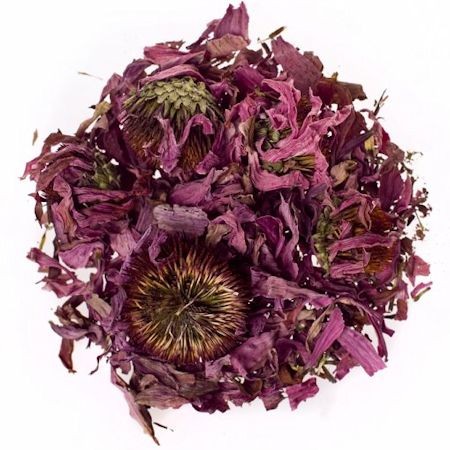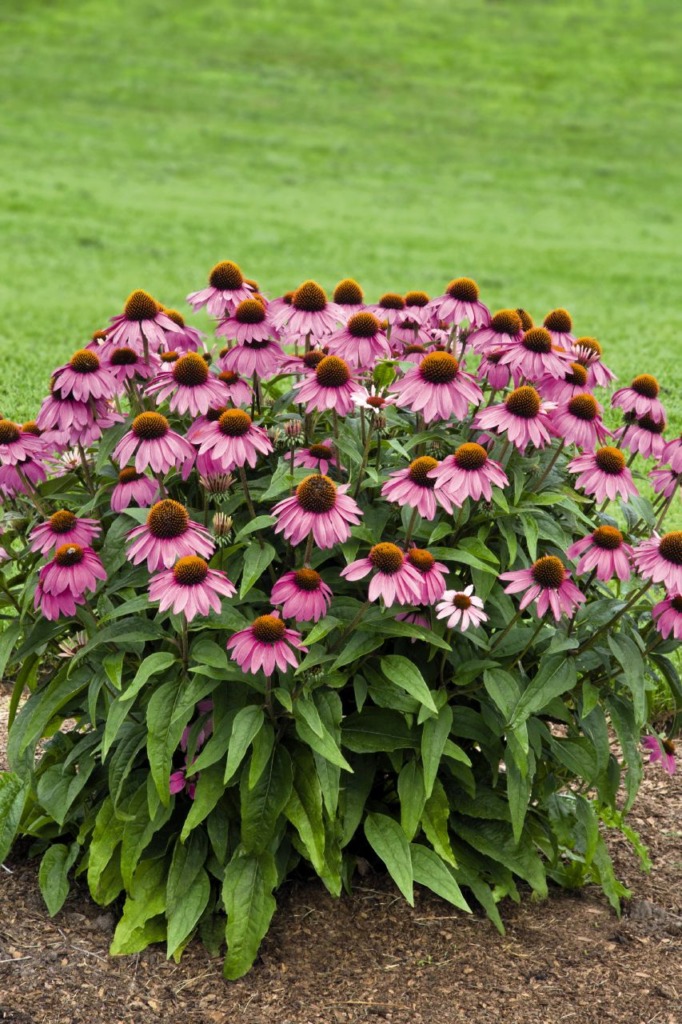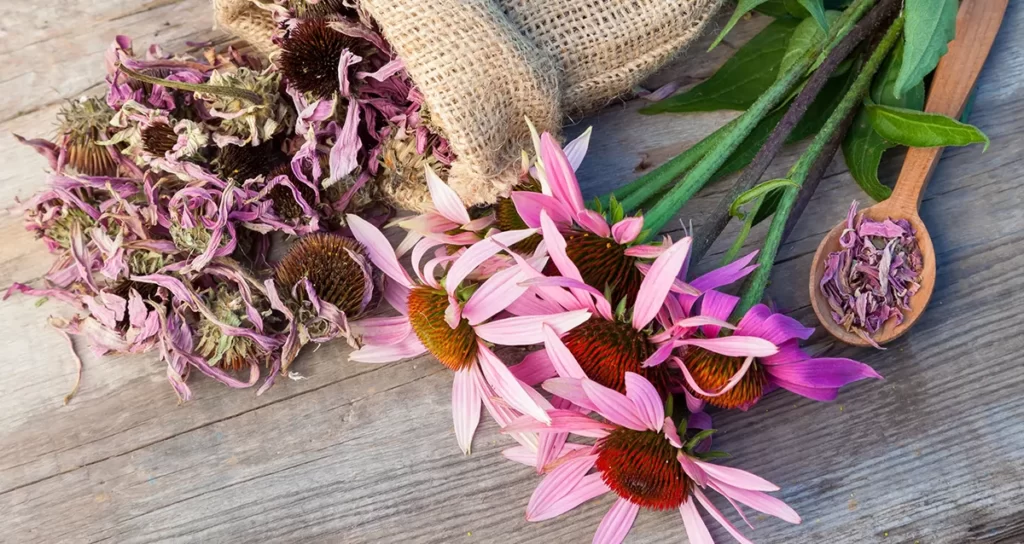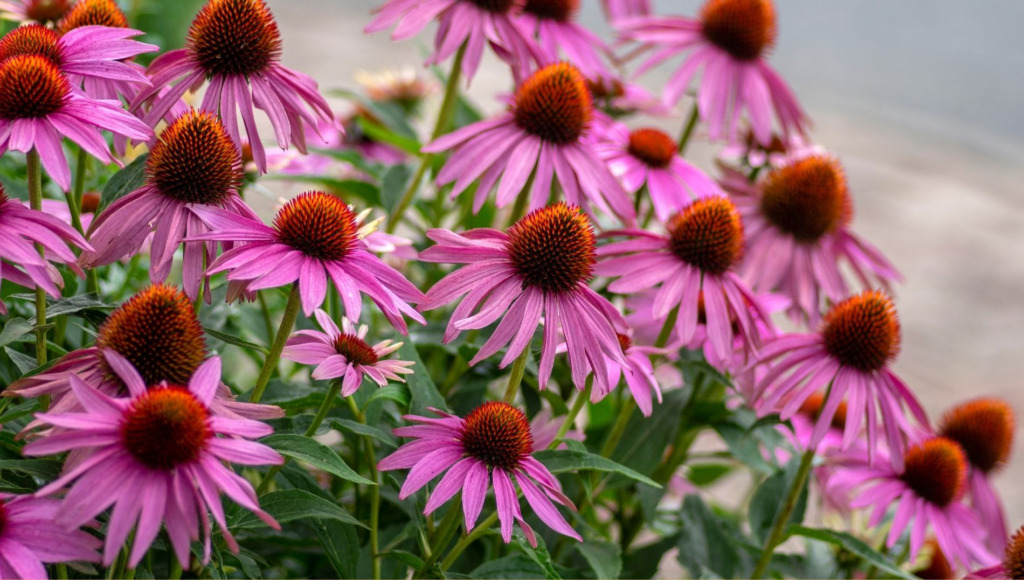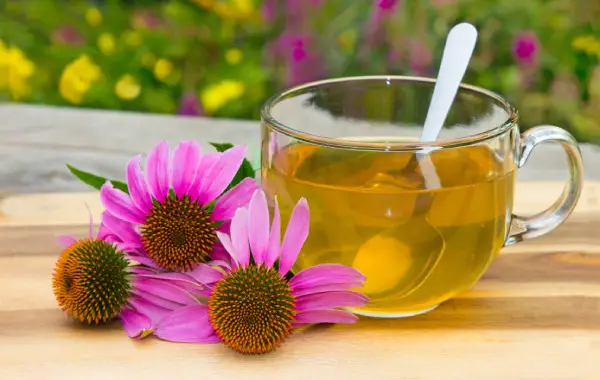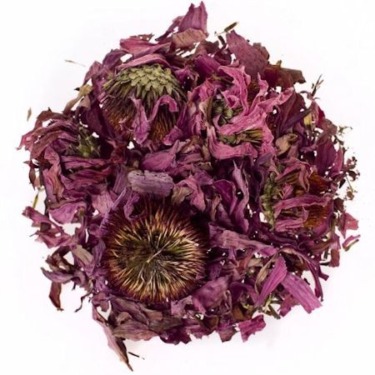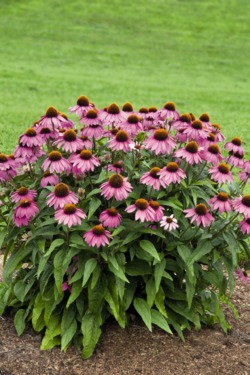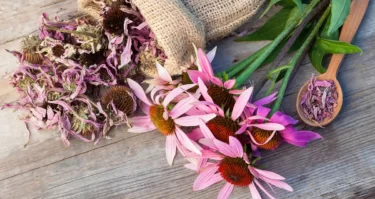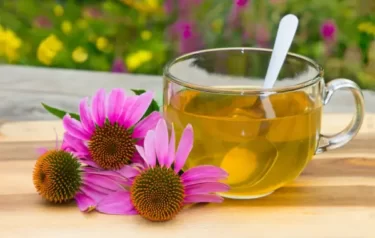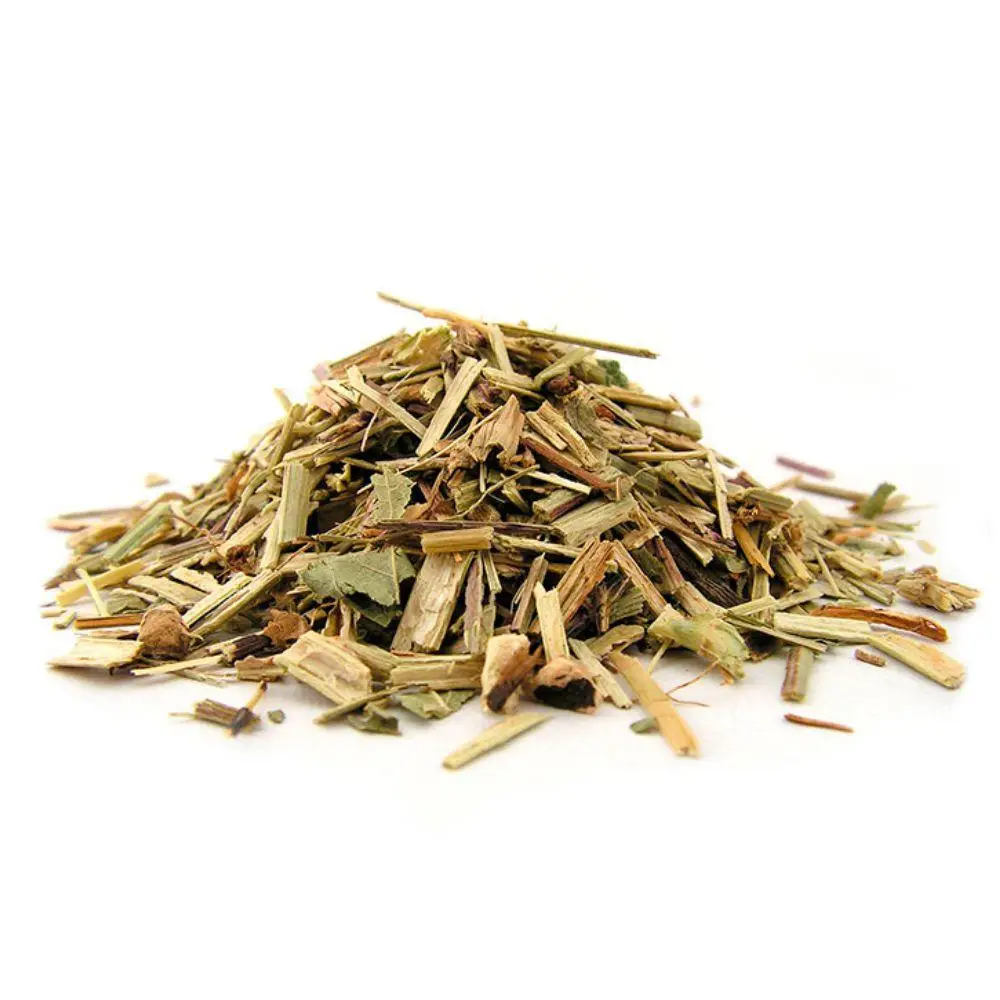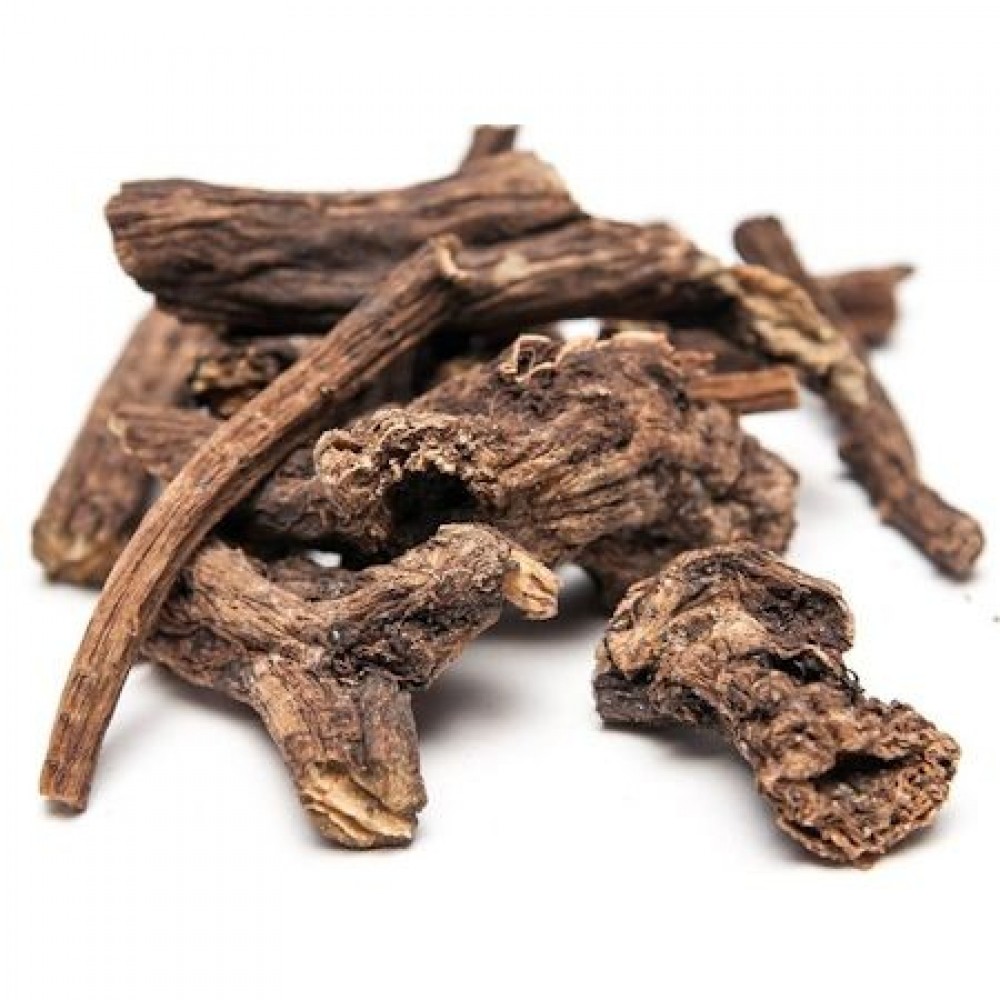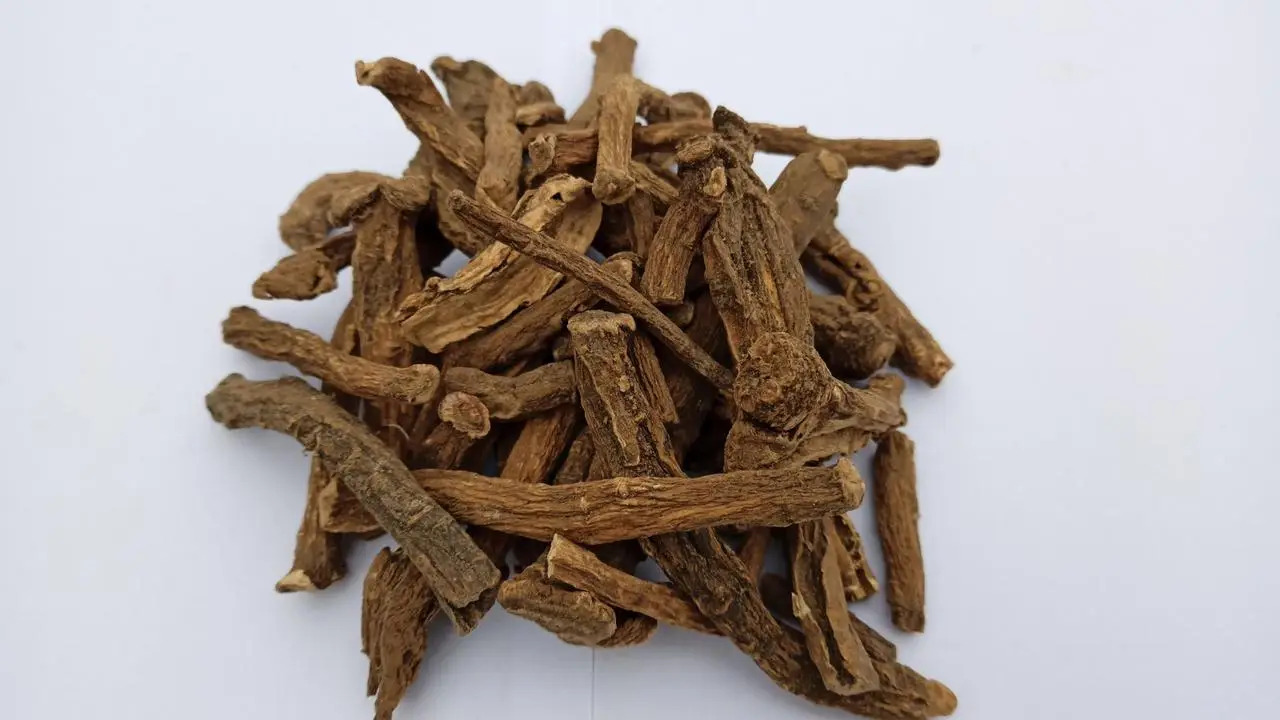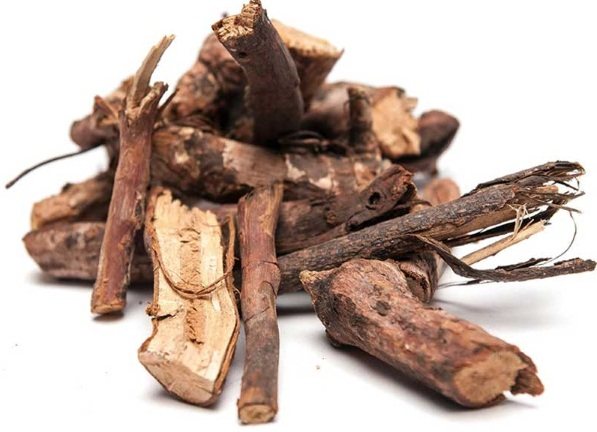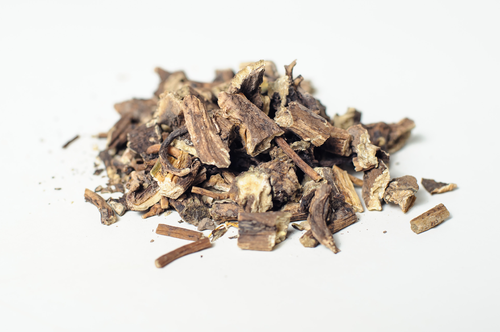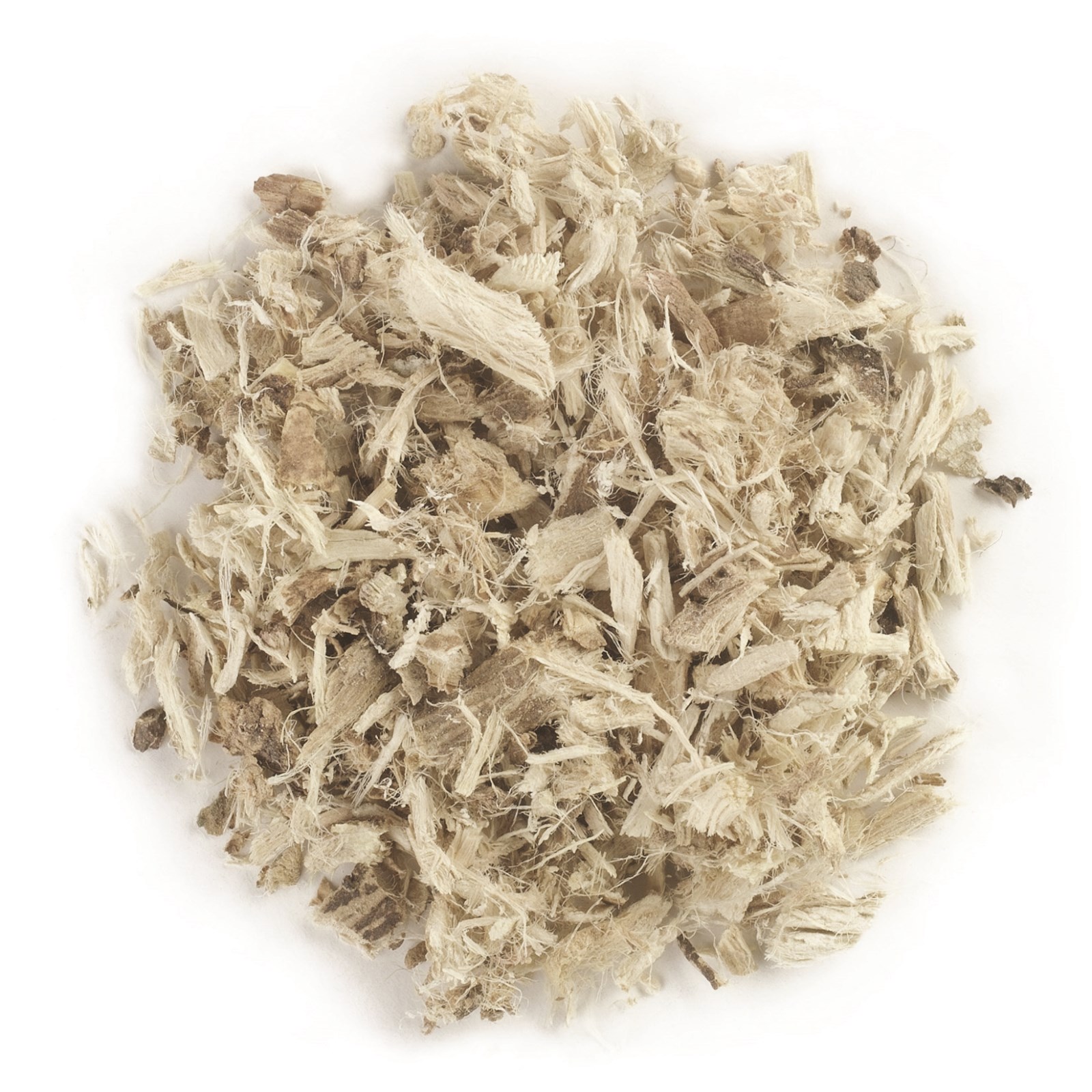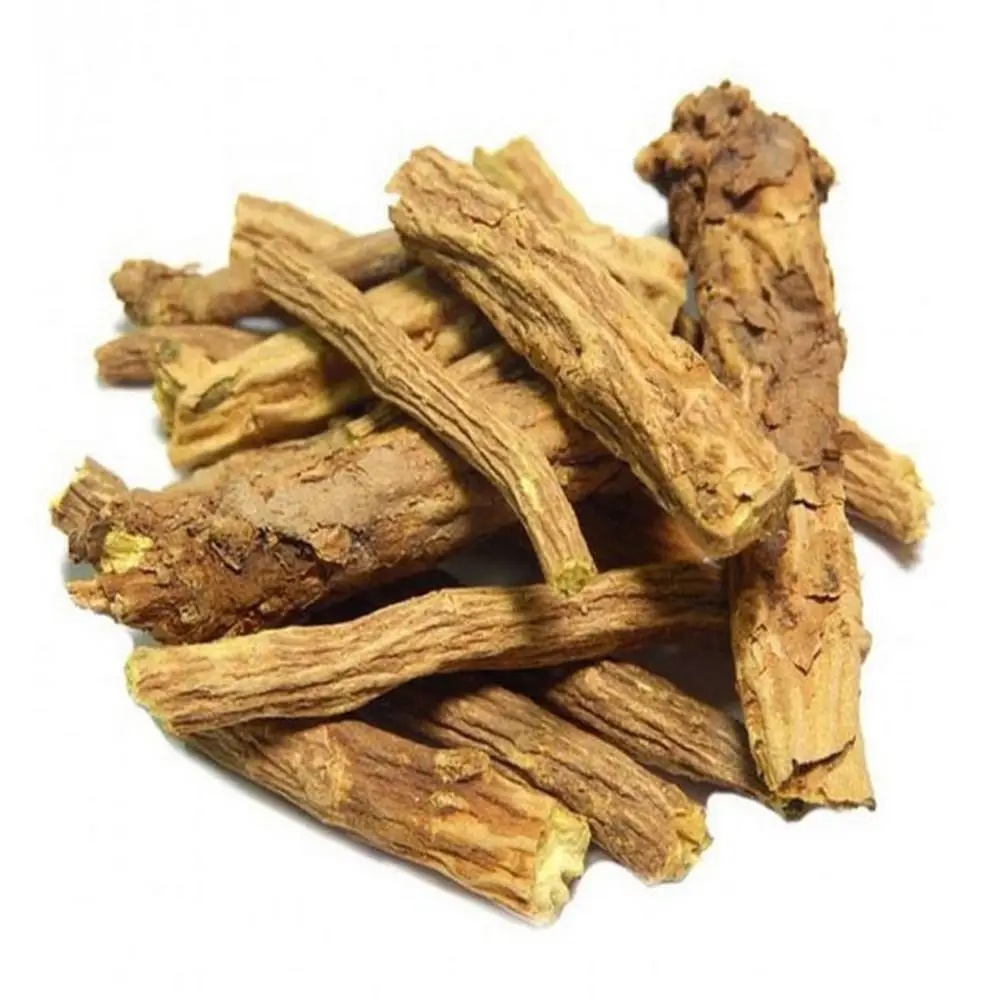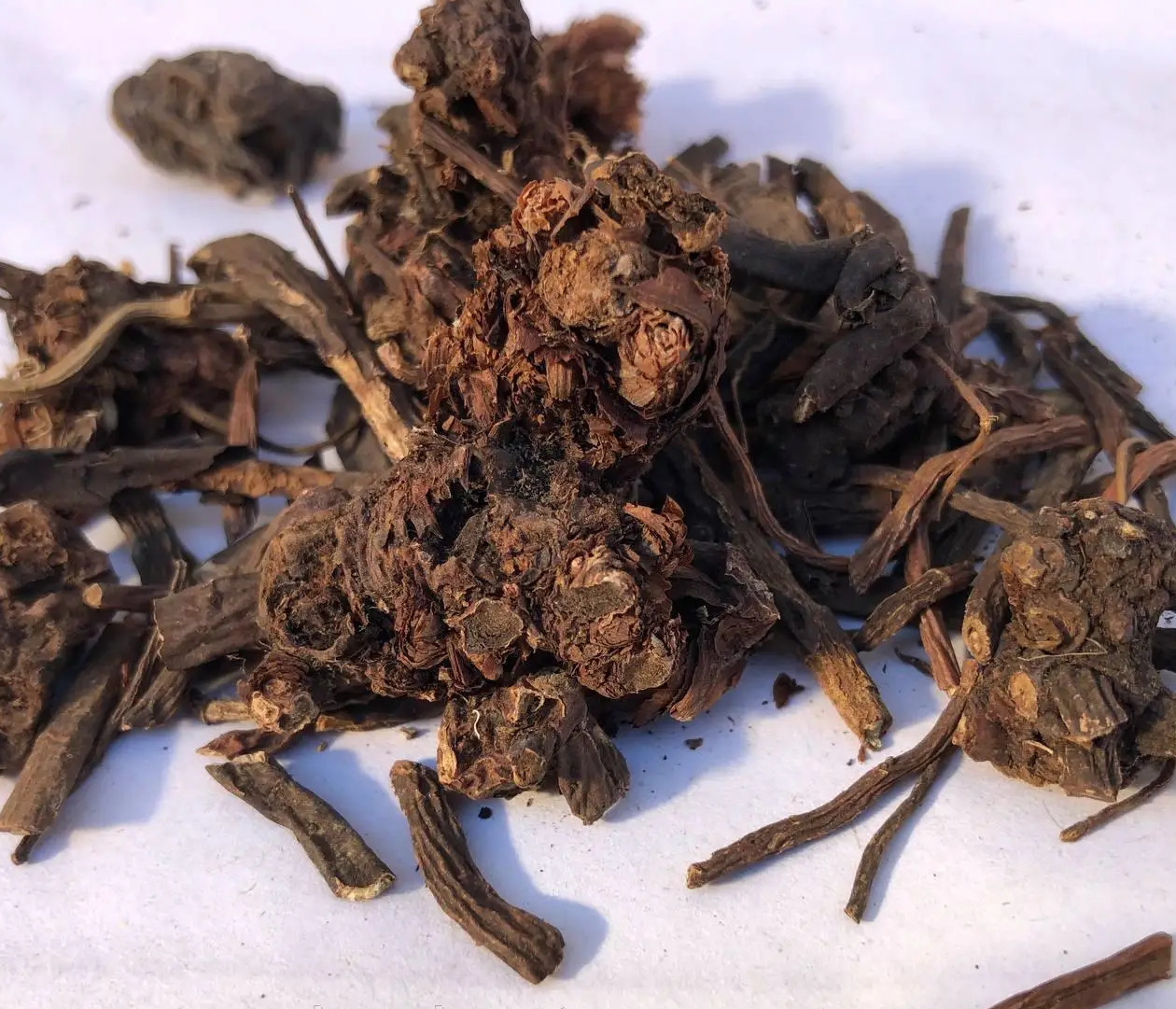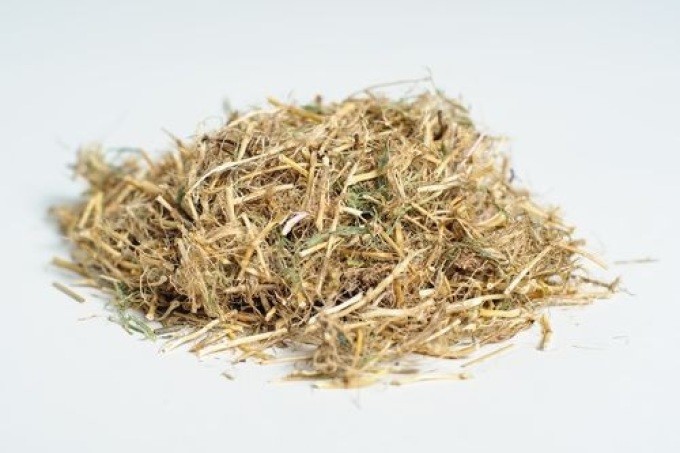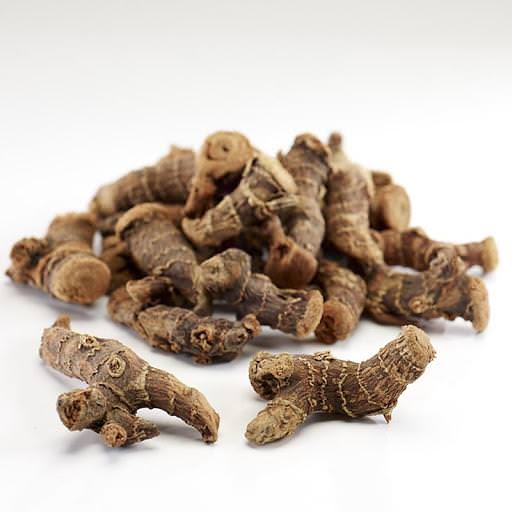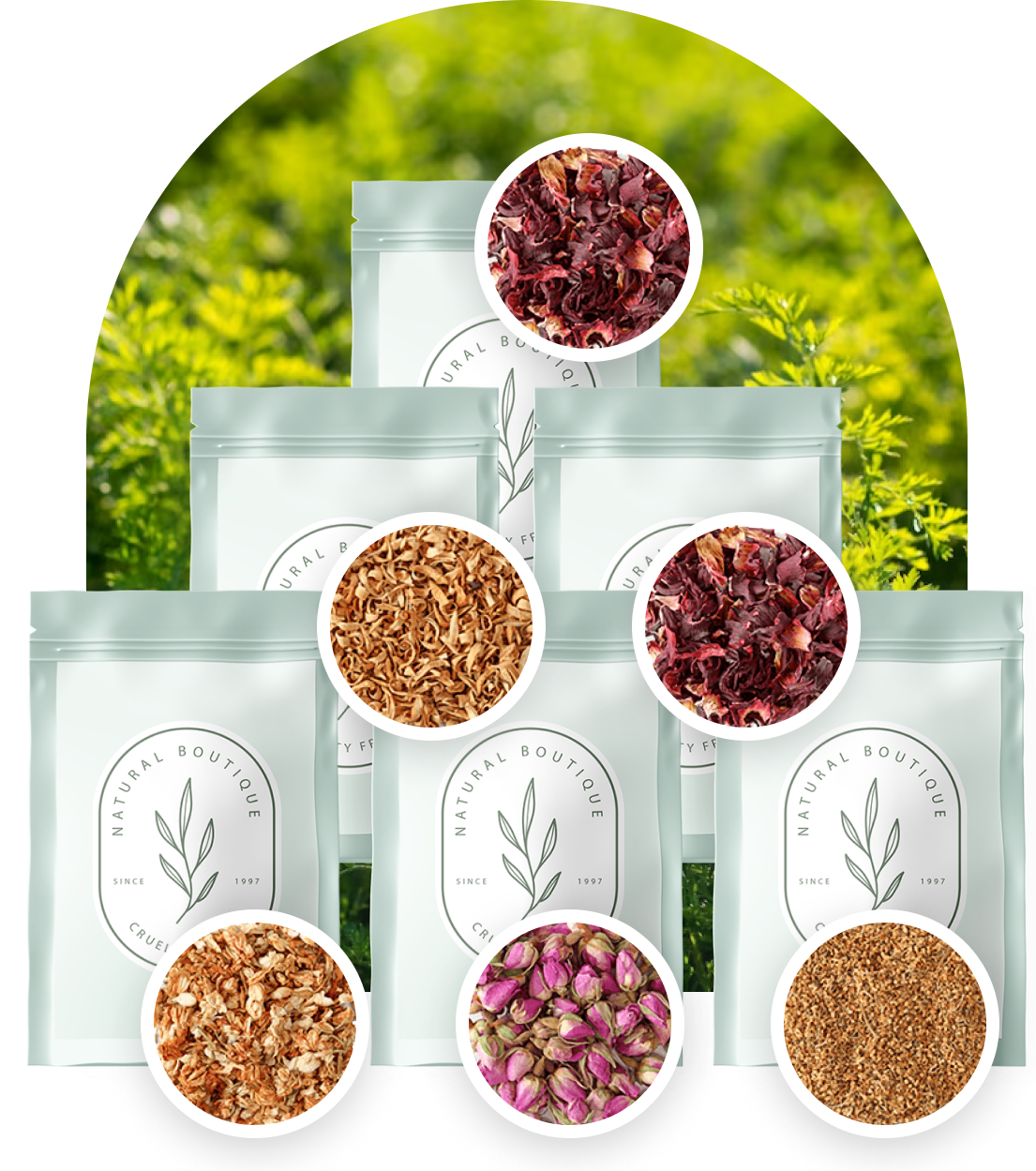Echinacea refers to a perennial herbaceous plant with a height of 100 cm. It has upright stems and a taproot rhizome. The leaves are rosette-shaped, rough. The upper leaves are pointed, lowered. Inflorescences are large baskets up to 15 cm in diameter. Flowering begins in July and lasts about 60 days. The color depends on the type of echinacea.
Echinacea is harvested during the flowering period, cutting off the tops 25–35 cm high. The rhizome with roots is collected in autumn. They are freed from the ground, washed, dried and cut into pieces. Dry in well-ventilated rooms or dryers at a temperature of 40-45 degrees.
The active substances of echinacea participate in the process: blood formation, prevent cell aging, and prevent the appearance of tumors. They also improve the functioning of the immune system, strengthen liver protection, improve the regeneration of damaged tissues, stimulate the formation of bone material, nails, and teeth.
Inflorescences, stems, leaves and rhizomes are used to prepare preparations. Echinacea is especially useful for: a decline in immunity during the season of colds (alleviates the symptoms of SARS), liver and bladder diseases, ENT infections, insomnia and irritability, allergies, burns and bites on the skin, women’s diseases.
The use of echinacea is completely contraindicated in autoimmune, systemic pathologies, such as leukemia, HIV, AIDS. Typical allergic reactions are hives, cough, runny nose, nausea and vomiting, dizziness.
Echinacea also helps with physical fatigue and is prescribed for emotional burnout. Supplements with it are included in the protocol for the treatment of anxiety states and major depressive disorder. Unfortunately, pregnant and breastfeeding women are not allowed to drink echinacea preparations.
